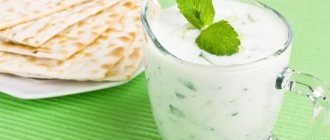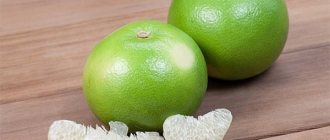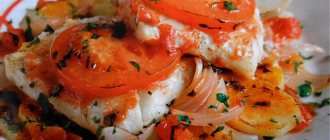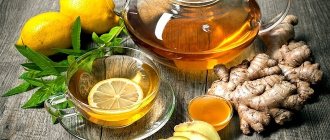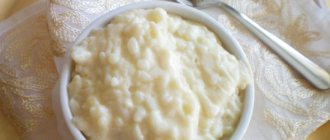Long Island
Long Island Iced Tea
One 15-ounce serving contains a whopping 454 calories, 62 grams of carbohydrates (61 grams of sugar), 0 grams of protein and 0 grams of fat. If these calories surprise you, based on how healthy you know tea to be, think about this: All the vodka, gin, rum and tequila add up to empty calories, but Three Seconds and Coke douse this drink in sugar syrup. And there isn't even real tea! Instead, try our Tokyo Tea recipe in the best low-calorie cocktails for summer.
The benefits and harms of gin. What do you drink gin with other than tonic?
Coniferous alcohol, made from juniper berries, can be combined with many non-alcoholic and alcohol-containing drinks. Let's give an example of the most popular cocktails based on juniper vodka.
- Martini. This alcohol belongs to the category of timeless classics. To prepare, you need only two ingredients - dry vermouth and Beefeater or another variety. Use a shaker to ensure even mixing of ingredients. The classic proportion is 1 part vodka and 7 parts dry vermouth. The cocktail can be complemented with olives and a slice of lemon.
- Hurricane . This cocktail is known all over the world and is prepared from many ingredients mixed in equal proportions - vodka, light and dark rum, Amaretto, grapefruit juice, orange juice and a small proportion of grenadine syrup. The cocktail is mixed in a shaker and served in tall Pina Colada glasses, one third filled with ice cubes.
- Negroni. This alcohol-containing drink is a classic one. It is an exotic combination of juniper vodka, Campari and sweet vermouth, mixed in equal proportions. Alcohol is prepared in the glass in which it will be served. A slice of orange can complement the cocktail.
- Singapore Sling. If you're not sure how to drink Beefeater Gin, you'll love this recipe. The fact is that this alcohol should use strong gin. Beefeater is one of these because it has a strength of 47%. The alcoholic cocktail has a pronounced aroma of fresh cherry. It is made with one part grenadine syrup, one part cherry liqueur and two parts strong gin. Grenadine syrup is poured into the bottom of the glass. After this, the glass is half filled with ice. Only then is gin poured, and cherry liqueur on top.
Gin or vodka. How to drink gin three different ways
Gin was invented by the Dutch, but it became truly popular thanks to the British. This article is dedicated to gin (another name is juniper vodka) and its drinking culture. In just a moment, you'll learn how to drink gin in three different ways to appreciate its superb taste.
Gin is an alcoholic drink with a strength of 34-47 degrees, made by infusing wheat alcohol with juniper and other spices (coriander, almonds, anise, lemon zest, orris root, etc.) followed by distillation (distillation) of the finished tincture.
It is juniper in combination with other herbs that gives the drink a unique dryish taste that connoisseurs like so much.
Gin can be drunk in three different ways:
1. In its pure form. Suitable for lovers of strong alcohol. During the feast, undiluted gin, chilled to a temperature of 4-6°C, is served as an aperitif. The drink stimulates the appetite and delights guests, especially those who have never tried it before.
In the mouth, pure gin gives a cooling sensation. In England they even say that he is cold as metal. The addition of juniper also has an effect on the special production technology, in which repeated distillation in a special distillation cube takes place very slowly, literally drop by drop.
Still for gin
Pure gin is enjoyed with lemons, olives and even pickled onions. These products will not spoil the taste; on the contrary, they will be an excellent addition to the drink.
2. Diluted. Gin is mixed with sparkling mineral water, cola, soda or fruit juices (mostly citrus). The main advantage of this method is the ability to regulate the strength of alcohol in your glass.
There are no exact proportions; you can dilute the gin at your discretion. The most popular combination is 1:1, that is, add the same amount of another soft drink to a half-filled glass with gin.
Gin also goes well with other alcohol, for example, with vermouths or liqueurs, but this is already an element of preparing cocktails, which we will talk about later.
3. Gin cocktails. This is the most popular use. Its mild, clean taste and high strength allow you to mix gin with other ingredients to create excellent moderate-strength cocktails.
The most famous cocktail is the Gin and Tonic. It was invented by British soldiers serving in India. With the resulting drink they quenched their thirst and at the same time saved themselves from malaria. After returning home, the soldiers did not change their traditions, introducing the entire population of England to gin and tonic.
Gin and tonic is the most popular gin cocktail.
The recipe for gin and tonic is very simple: fill a tall, thick-bottomed glass glass one-third full with ice, add one part gin and two parts tonic. You can also put a slice of lemon on top. That's the whole cooking process.
Composition of the gin drink. Gin production technology
Gin is a strong alcoholic drink obtained by fractional distillation of alcohol with the addition of herbal spices. Strength not less than 40% vol.
Alcohol base
The basis of gin is alcohol. Most often, wheat alcohol with a strength of at least 95% vol is used. Alcohol for the production of gin is obtained by rectification or multiple distillation. Recently, preference has been given to rectified alcohol, as it has a neutral taste and aroma, which avoids unwanted flavors in the finished drink.
Herbal Ingredients
The spices used of course include juniper, coriander, almonds, citrus zest, fennel, etc. It all depends on the recipe and the distiller’s ideas; everyone has their own preferences.
It is clear that the more different spices are used in the cooking process, the stronger and richer the aroma of the final product will be. It is believed that to produce high-quality gin it is necessary to use from 6 to 10 different spices and berries.
Although gins are known where more than 100 aromatic components were used.
The main herbal spices used in the gin recipe are presented in Table 1.
Gin types. Types of gin and drink strength
The range of juniper vodka is not particularly diverse; there are only two main types of gin in the world: Dutch and dry (English). We will talk further about the characteristic features, differences and strength of these types. Depending on the production technology, all English gins come in the following types:
London Dry Gin (dry London gin) - obtained by distillation, does not contain sugar. It is considered a drink of the highest quality. Despite the name, it is produced in many countries, not just London. Its strength ranges from 40 to 47 degrees. In addition to juniper, other additives can be used: coriander, orris root, citrus fruits or lemon zest.
Plymouth Gin is produced in the English city of Plymouth, Devonshire. This type of drink is protected by copyright. Only Plymouth producers are allowed to display the name "Plymouth Gin" on their labels. In terms of production technology, quality and strength, it is practically no different from the first (London) type.
Yellow Gin is an amber-colored gin with a strength of 39-45 degrees, which is infused in oak sherry barrels during the production process. Many experts do not even classify this type as traditional gin; it is very rarely found on sale.
First of all, all English gins are intended for cocktails, although there are connoisseurs who drink them neat.
Dutch gin differs from English gin in its pronounced grain aroma and production technology. Juniper berries are first mixed with grain mash and only then distilled. Next, the finished gin is diluted with water, juniper is added again and distilled again. The strength of the finished drink is 35 degrees.
Almost all Dutch gins have a golden color, obtained by aging in oak barrels (mandatory) and adding caramel. Thanks to its relatively low strength (35-40 degrees), this gin is easier and more enjoyable to drink than English gin, but its quality is usually somewhat lower.
The most famous brands of gin are: Beefeater Gin, Bombay Sapphire, Greenall's, Gordon's Gin and Finsbury.
Source: https://zdorovecheloveka.com/stati/polza-i-vred-dzhina-s-chem-pyut-dzhin-krome-tonika
Gin
This is an English alcoholic drink originally from the Netherlands.
Gin production began in the mid-17th century. in the Netherlands, and after the “Glorious Revolution” it spread to England. It gained the greatest popularity after a market was created in London for the sale of low-quality wheat, from which gin was made.
The government did not impose any duties on the production of gin and, as a result, by the beginning of the 18th century its distribution had reached unprecedented proportions. Thousands of liquor stores and gin shops have opened.
The total volume of its production was six times higher than the volume of beer production.
Over time, the process of making gin has remained virtually unchanged. Its main component is wheat alcohol, which, through the process of vertical distillation and the addition of juniper berries, acquires its unique dry taste.
Lemon zest, orris and angelica roots, bitter orange, coriander and cinnamon can be used as herbal additives in the production of gin. According to established international standards, the strength of the drink cannot be less than 37 vol.
Today, only two types of gin are produced: London and Dutch. They have completely different production technologies. At all stages of distillation of Dutch gin, juniper is added, and the resulting strength of the drink is 37 vol.
London gin is obtained by adding aromatic substances and distilled water to ready-made wheat alcohol. The strength of the drink at the exit is 40–45 vol.
English gin also has three types: London Dry Gin, Plymouth Gin and Yellow Gin.
Gin is usually colorless, but can take on an amber hue when aged in oak barrels. Only Dutch gin can be aged for a long time. English gin, other than Seagram's Extra Dry, is not aged.
Since its inception, gin has gone from a low-quality surrogate to a truly gentleman's drink. And now it is used both in its pure form and in various kinds of cocktails.
Gin, like any other alcoholic drink, should not be consumed in large quantities. Gin has medicinal and preventive properties only in small doses.
Gin was created in the Middle Ages as a medicinal tincture with a diuretic effect. It was sold in pharmacies in small doses. The classic gin and tonic cocktail originated in India and was widely used as a cure for malaria. The main active ingredient, quinine, contained in tonic water, has a bitter taste, and combining it with gin made the drink much more pleasant.
Currently, gin is used both for rubbing and for the prevention of colds.
If you mix 2 tablespoons of gin, onion juice and honey, you get an excellent remedy for bronchitis. You need to take a teaspoon every three hours.
Brewed chamomile (2 tbsp per 100 ml) with 50 g of gin also helps against bronchitis and has an expectorant effect. It is necessary to take a tablespoon for two days before meals.
To relieve lower back pain due to radiculitis, there are several recipes based on gin.
The composition of freshly squeezed white radish juice, onion and two tablespoons of gin must be spread out on gauze folded several times, applied to the painful area, covered with polyethylene to seal, and wrapped on top with a warm, thick cloth. After half an hour, the compress must be removed and the skin area wiped with a soft cloth moistened with warm water.
Another compress option is much simpler. It is necessary to moisten gauze with gin, apply it to the source of pain and, as in the previous recipe, cover it with polyethylene and a warm cloth. You need to keep it for three hours, after which the skin should be wiped and lubricated with moisturizer. The same compress helps with sore throat.
Gin is also used to treat swelling and redness of the larynx due to infection or strained ligaments. A mixture of onions, two tablespoons of sugar and two glasses of water is boiled until the onions soften and 50 g of gin is added to it. This decoction should be taken one teaspoon throughout the day.
Systematic consumption of gin in large quantities can lead to alcohol addiction and disruption of the cardiovascular system.
Due to individual intolerance, juniper in gin can cause an allergic reaction. For the same reason, gin is contraindicated for people with kidney inflammation and hypertension.
Low quality or counterfeit gin can seriously harm the human body. Therefore, you should take gin from world brands, the quality of which is controlled by the manufacturer and does not raise any doubts.
The sweetish taste of gin is a sign of low quality drink.
Editor of the “Products” section Tatyana Eliseeva, © Food+
Milk Cognac Beer Wine Compote Tea Coffee Kvass Juice Martini
Source: https://edaplus.info/drinks/gin.html
Gin and tonic drink - how to make the right cocktail
Gin and tonic appeared on the shelves of domestic supermarkets relatively recently - at the beginning of the 21st century. The unusual drink quickly gained popularity among young people due to its affordable price and original taste. However, few people asked the question: is this low-alcohol cocktail really so harmless and can everyone drink it?
How the gin and tonic cocktail came to be
Few people know that the tonic was originally created as a medicine - it was used in the 18th century, during the West Indian Campaign, when British soldiers began to become infected with malaria, and subsequently scurvy.
At that time, medicine was very poorly developed, and all treatment was reduced to taking quinine, from which a bitter infusion called tonic was made.
The liquid had such a disgusting taste that patients flatly refused to take the medicine.
However, there was no way out, and the doctors resorted to a trick, starting to mix alcoholic gin - a very popular and quite tasty drink - into the tincture.
The soldiers liked this treatment, and they drank the cocktail with pleasure, snacking on it with lemons. The problem of scurvy and malaria was solved. And after the military campaign ended, the invented medicine finally turned into a low-alcohol drink and migrated from the battlefields to peaceful settlements.
Ingredients of gin and tonic
The ready-made drink, which is sold in stores, has practically nothing to do with the classic healing cocktail. A traditional cocktail should contain only two basic ingredients - gin and tonic (plus a few pieces of ice and a wedge of lime/lemon for garnish). The composition of the factory cocktail looks somewhat different:
- ethanol;
- caffeine;
- quinine;
- carbon dioxide;
- preservatives;
- flavorings, sweeteners and flavor enhancers;
- chemical additives.
The last ingredient is the most dangerous for the human body. Some chemical additives that make up a canned drink are carcinogens that are like a time bomb.
Carcinogenic additives destroy internal organs and disable the body, causing many serious diseases (in particular cancer), and sometimes death.
By the way, certain components that domestic producers shamelessly add to drinks are officially prohibited in European countries.
The dangers of gin and tonic
Infatuation with a factory-made drink can lead to serious consequences, mainly due to the fact that the cans in which the manufacturer loves to package the cocktail aggravate the harm of low-alcohol drinks. Storing alcohol-containing products in such containers is strictly prohibited!
First of all, the following people suffer from a canned cocktail:
- the liver is forced to process not only ethanol, but also sugar (which, according to manufacturing technology, is necessarily present in the drink). With regular use of the cocktail, the organ begins to malfunction, and sometimes completely stops working. Constant stress can lead to such a terrible disease as cirrhosis;
- a stomach suffering from the ingestion of ethanol mixed with preservatives and carcinogens. At a minimum, this is fraught with regular gastrointestinal disorders, and in severe cases - gastritis and ulcers;
- the heart, which is forced to sharply accelerate its rhythm due to increased blood pressure after drinking ethanol. Ultimately, these processes lead to problems with blood pressure, tachycardia and premature wear of the heart.
- the brain, whose cells begin to die en masse as a result of excessive consumption of the industrial drink.
In addition, a huge amount of preservatives can cause serious allergies, including anaphylactic shock. It develops at lightning speed and can cause tragedy if medical help does not arrive in time.
The list of internal organs and systems that suffer from regular consumption of cocktails in cans can be endless. However, even without this it is clear that the harm of such drinks is irrefutable. This applies not only to our cocktail, but also to other similar canned cocktails - for example, Blazer.
There is only one way to taste the famous drink without causing serious damage to the body - make it yourself. True, this will require some effort from you, and the cost of the drink will be much higher - after all, it requires only high-quality ingredients.
The first thing to do is to find real gin, obtained by distilling high-quality alcohol and tincture of juniper berries. Of course, you can take a low-quality drink - it will be cheaper, but the taste will not be nearly as rich.
Secondly, you need to choose the right tonic. This drink is not alcoholic, but it must contain natural quinine , and there should be no flavorings - they will spoil the whole picture, creating a repulsive aftertaste. Before making the cocktail, the component must be kept in the refrigerator.
How to make a real gin and tonic
So, for the cocktail you will need:
- 200−300 ml of tonic;
- 100 ml quality gin;
- a piece of lemon or lime;
- ice.
Take a tall glass and pour gin into it, then add a few pieces of ice. Pour tonic into the container, garnish the glass with a slice of citrus and insert a cocktail straw into it. The drink is ready - you can serve it.
There is another way to prepare a cocktail. Take a glass with thick walls and a bottom and cool it in advance. Throw pieces of ice at the bottom of the container, pour in gin and tonic (1:1), add a teaspoon of chilled lemon juice , equip the drink with a cocktail straw and serve. You cannot shake the cocktail, otherwise it will lose all its sophistication.
Even if you have made a real drink using high-quality ingredients, remember that the cocktail is alcoholic and should not be consumed in excess. And even more so, it is forbidden for pregnant women, minors and people suffering from chronic pathologies to taste it.
Source: https://pivunet.com/vidyi-alkogolya/napitok-dzhin-tonik
